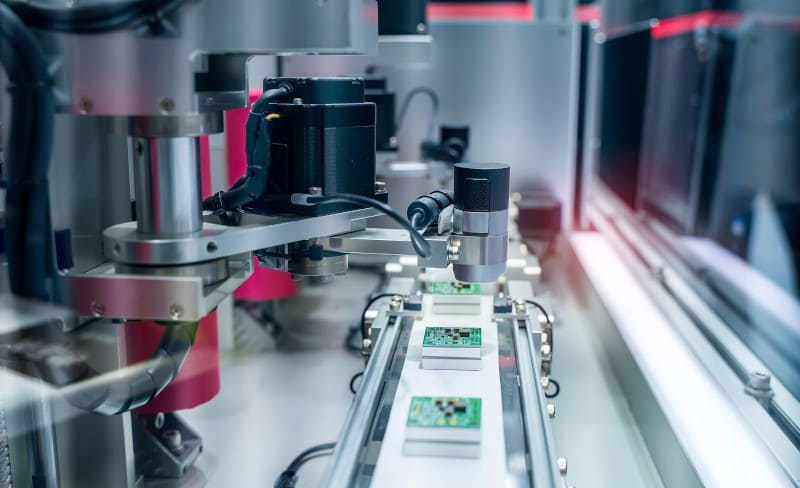For over a decade, the European machine vision industry has reported steady growth, with turnover increasing by an average of 9 percent annually between 2012 and 2022. Despite a temporary setback in 2020 (minus 4 percent) due to the Covid-19 pandemic, the industry rebounded strongly in 2021 (plus 17 percent) and 2022 (plus 11 percent).
The European machine vision industry has demonstrated exceptional growth over the last decade and remains a very attractive industry.” says Mark Williamson, Chairman of the Board of the VDMA Machine Vision division during the VISION / VDMA CEO Roundtable. “Unfortunately, due to the current economic and geo-political situation we were unable to repeat this in 2023 and while we are starting to see improvements, it’s unlikely to see growth until late 2024.”
Based on the latest VDMA statistics, the European machine vision industry experienced a 7 percent decrease in sales during 2023. For this year, VDMA Machine Vision anticipates a continued downturn, projecting a further 3 percent decline in sales for the current year.
2023: weak economy and decline in exports
The weakened global economy, coupled with crises such as the war in Ukraine, contributed to a tough year for the European machine vision industry. The demand in Europe fell by 3 percent. Export-oriented companies were particularly affected, with demand for European machine vision dropping by 21 percent in Asia and 18 percent in North America.
German machine vision industry: turnover twice as high as in 2013
According to the latest VDMA annual market survey, the German machine vision industry showed strong growth, doubling turnover from 1.6 billion euros in 2013 to 3.2 billion euros in 2023, despite a decline in sales of 7 percent in 2023.
Turnaround expected in autumn, along with VISION 2024
Looking ahead, the industry faces uncertainties with many customers being hesitant to invest amidst prevailing uncertainty. Order backlogs have been shrinking, new orders have been postponed and business expectations again worsened in November and December 2023, leading VDMA Machine Vision to publish a negative forecast for the first time in over a decade. However, the industry’s diversified customer base has helped mitigate the impact of declining sales compared to other sectors. Many industries and many visionary products rely on computer / machine vision.
Longer-term outlook remains positive
Despite short-term challenges, the longer-term outlook for machine vision remains positive. As a key technology in the global automation race, machine vision finds applications not only in traditional industrial sectors but also in non-manufacturing industries, driving improvements in quality, cost-effectiveness, competitiveness, autonomy, and safety standards.
With the emergence of new AI-technologies and -approaches, the market potential for image processing continues to grow, with VDMA Machine Vision anticipating a shift in trends by the fourth quarter of 2024.
The industry eagerly anticipates VISION 2024, expecting further impetus from the world-leading trade fair for machine vision technology. While challenges persist, the European machine vision industry remains committed to innovation and long-term growth.

